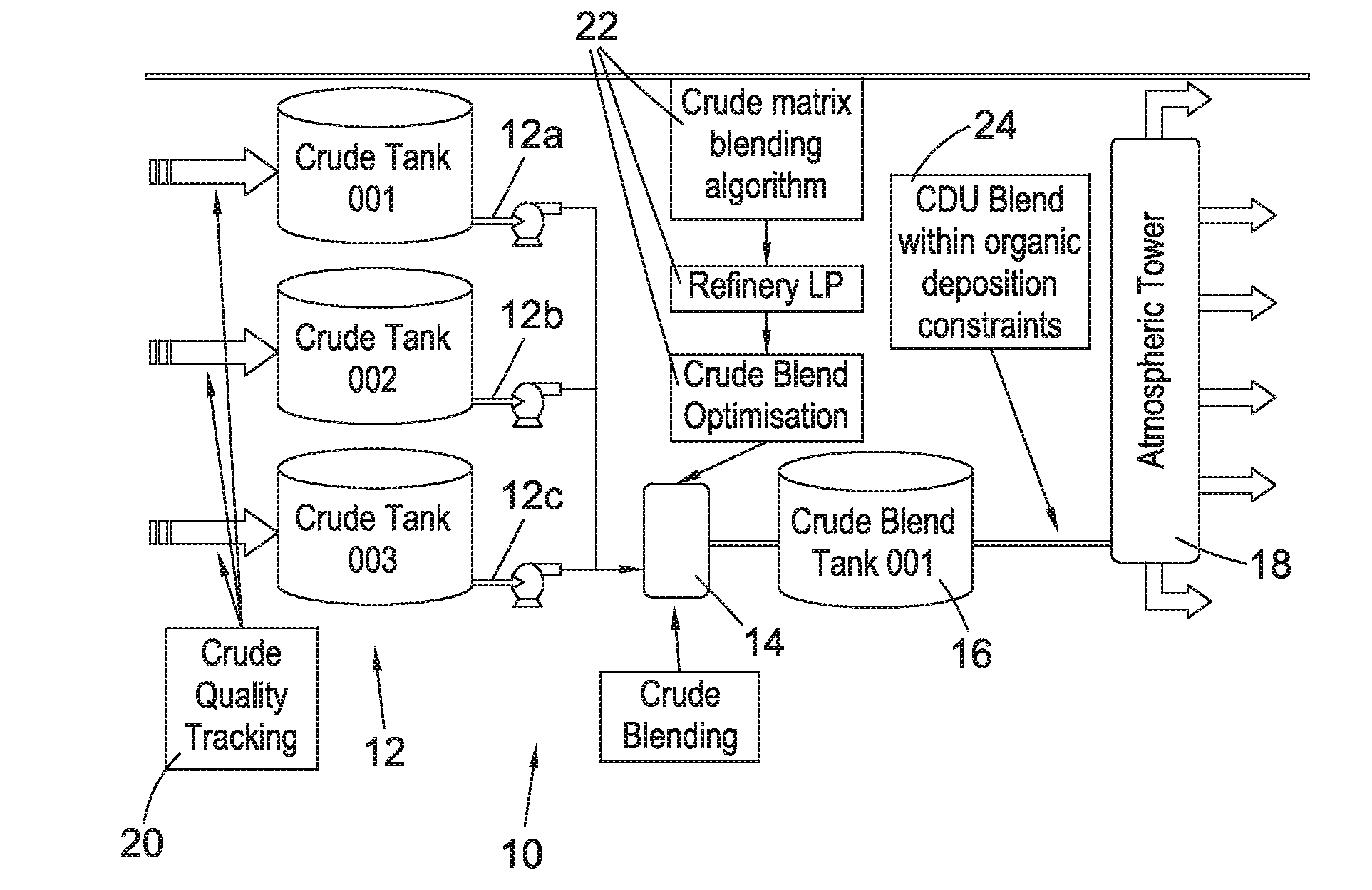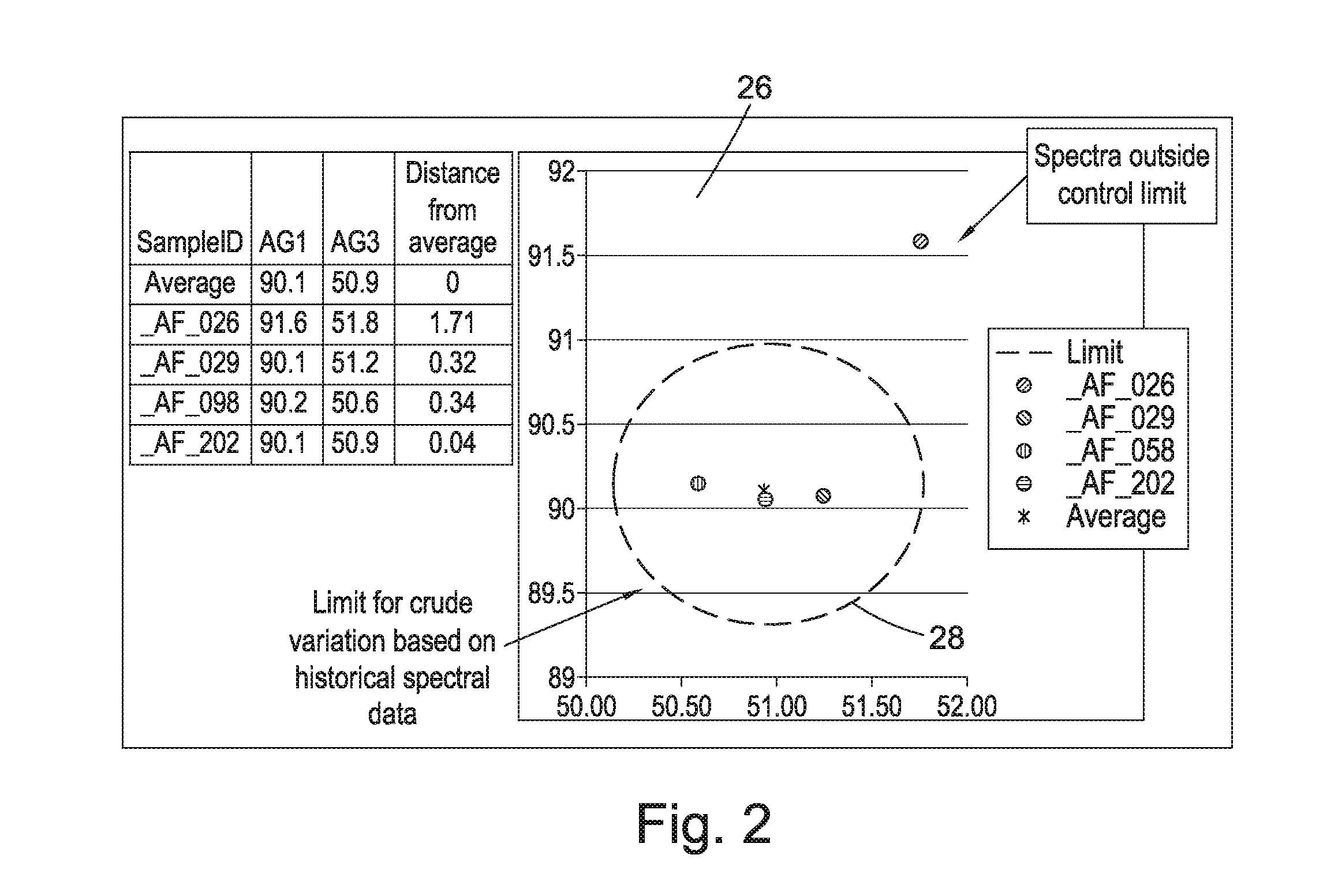Method and system for analysing a blend of two or more hydrocarbon feed streams
a technology of hydrocarbon feed streams and blends, applied in the direction of hydrocarbon distillation control/regulation, instruments, chemical indicators, etc., can solve the problems of less stable crude, unstable blends, and difficult to assess so as to improve the assessment of the stability of the blend
- Summary
- Abstract
- Description
- Claims
- Application Information
AI Technical Summary
Benefits of technology
Problems solved by technology
Method used
Image
Examples
Embodiment Construction
[0056]In FIG. 1a a refinery system 10, having crude oil holding tanks 12, is arranged to controllably feed crudes to a blender 14 and subsequently hold the blend in a crude store or blend tank 16. The output 12a, 12b, 12c from each tank is referred to as the ‘feed’, which comes from a raw supply of crude oil from an oil production facility such as an oil well that is held in each tank. Each feed 12a, 12b and 12c is combined to form a blend that is fed to the blend tank 16. The store feeds an atmospheric tower 18. Measurement systems 20 monitor the quality of each crude. Physical and / or theoretical calculations 22 are performed to determine the percentage of crude in the blend. The resulting feed to the Crude Distillation Unit (CDU) 24 is prepared to meet refinery operating conditions e.g. organic deposition constraints.
[0057]Overall, OD is defined as flocculation and precipitation of organic substances such as asphaltene and other crystalline organic material can occur when crude oi...
PUM
| Property | Measurement | Unit |
|---|---|---|
| wavelength | aaaaa | aaaaa |
| wavelength | aaaaa | aaaaa |
| blend stability | aaaaa | aaaaa |
Abstract
Description
Claims
Application Information
 Login to View More
Login to View More - R&D
- Intellectual Property
- Life Sciences
- Materials
- Tech Scout
- Unparalleled Data Quality
- Higher Quality Content
- 60% Fewer Hallucinations
Browse by: Latest US Patents, China's latest patents, Technical Efficacy Thesaurus, Application Domain, Technology Topic, Popular Technical Reports.
© 2025 PatSnap. All rights reserved.Legal|Privacy policy|Modern Slavery Act Transparency Statement|Sitemap|About US| Contact US: help@patsnap.com



